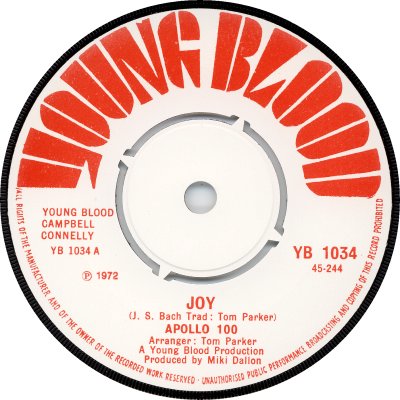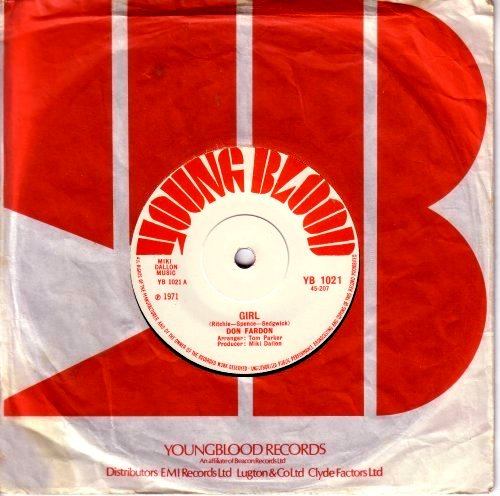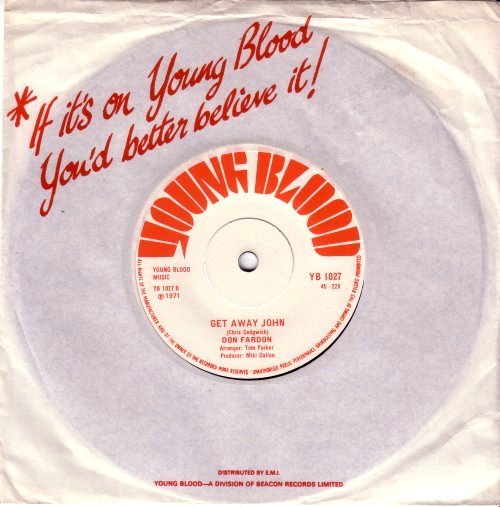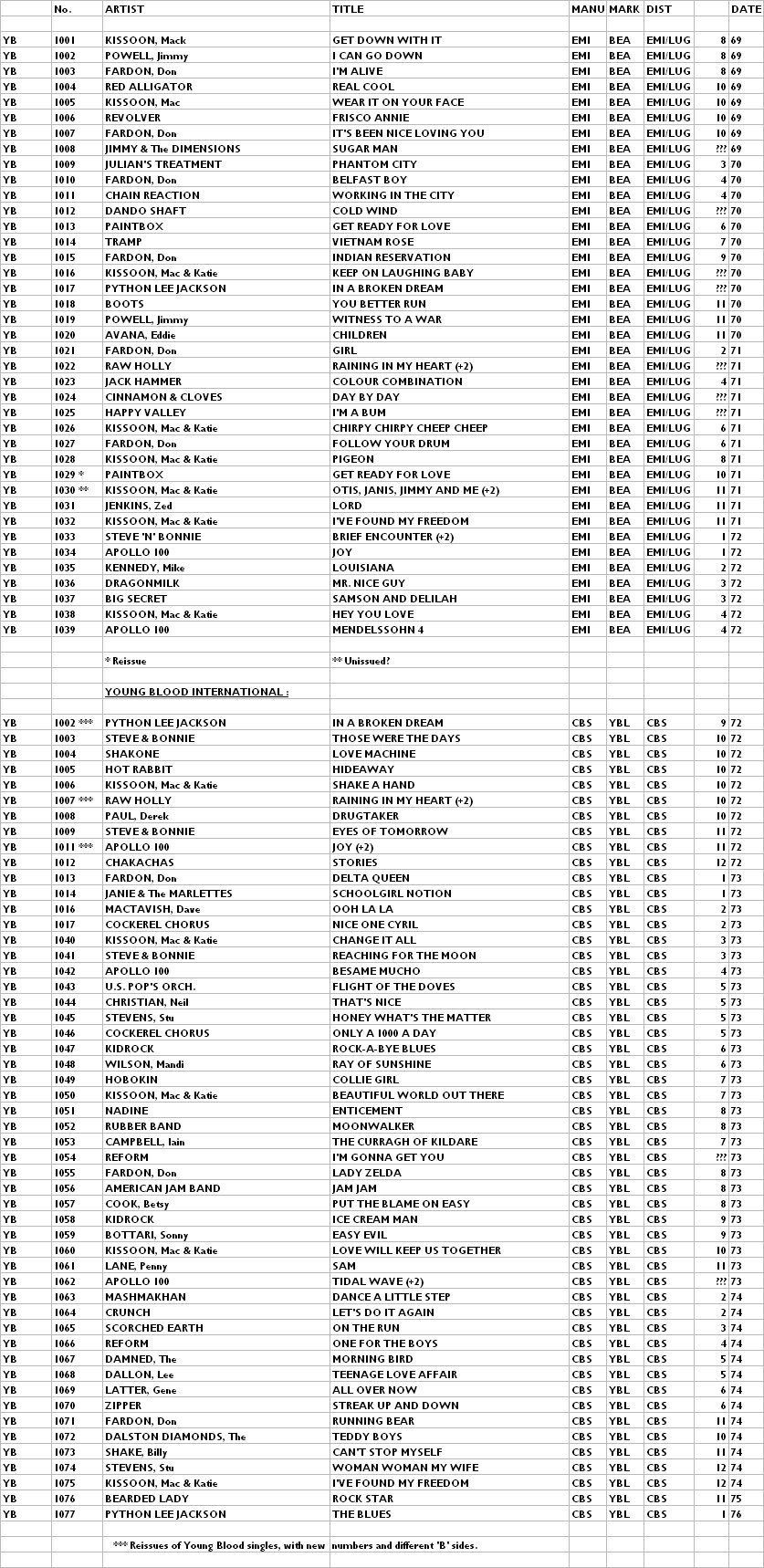


Young Blood was formed in 1969 by producer Miki Dallon, after the demise of Strike, his previous label. 'Record Retailer' of the 23rd of July 1969, commenting on the new company, said that it would be run in association with Beacon Records (q.v.), with Beacon handling marketing and promotion and sharing distribution duties with EMI. The first two singles were scheduled for release on the 1st of August and would be numbered in the YB-1000s. An advert in 'RR' of the 11th of November 1970 confirmed that EMI was still handling distribution at that time. According to Billboard magazine (9th August 1969) Young Blood was intended predominantly as as R&B label, but that policy seems not to have lasted very long. 'RR' of the 29th of August 1970 said that Dallon's deal with Beacon was a three-year one and that Beacon's involvement had been an important factor in getting EMI on board. The article went on to say that the company was planning to develop a new 'standards' catalogue, 'probably under a new label' - the 'new label failed to appear but Young Blood did issue a couple of Jazz LPs around that time.
In July 1972 both Beacon and Young Blood moved from EMI to CBS. Young Blood was revamped: it became 'Young Blood International' and was given a new and more eye-catching label design. Also, somewhat confusingly, it started re-using many of its old catalogue numbers, though it stopped doing that after YB-1017 - the next International was numbered 1040. The two incarnations were sufficiently different for me to give each its own page, though for the sake of comparison I've put the discograpies together, below. The next part of the story can be found on the Young Blood International page (q.v.). Helpfully 'Billboard' of the 7th of October 1972 carried an advertizing feature on Young Blood, which gives the state of play at the time very fully. Young Blood International was shelved in 1976 but both it and Young Blood made a comeback in 1980. 'Music Week' of the 19th of January reported that the company had been acquired by Jan Olofsson, who had joined the company in the spring of 1971 as its International Manager, responsible for placing its product overseas. The revived Young Blood label had its old design but the printing was in mid-blue instead of red and catalogue numbers were mainly in the YB-00s. The report said that Young Blood was to carry out its own marketing, with Selecta dealing with distribution, but Selecta was wound down as a distribution facility in May 1980, a couple of months after the release of Young Blood's first single, and Polygram took over that job.
Young Blood tasted Chart success in 1970 with two singles by Don Fardon, 'Belfast Boy' b/w 'Echoes Of The Cheers' (YB-1010; 4/70) and 'Indian Reservation' b/w 'Hudson Bay' (YB-1015; 10/70), the latter hitting the No.3 spot, while 1971 brought a minor British hit for Mac and Katie Kissoon, 'Chirpy Chirpy Cheep Cheep' b/w 'Walking Around' (YB-1026; 6/71). Python Lee Jackson's 'In A Broken Dream' (YB-1017; 1970) stiffed when it was first put out but reached No.3 when reissued a couple of years later on Young Blood International (YB-1002; 9/72). The company enjoyed more success overseas than it did at home; it had a policy of carrying out licensing deals for individual singles rather than for its entire catalogue, and its products can be found on several different labels as well as its own. The Kissoons' single was a far bigger hit in Europe and the USA than it was over here; also successful in the States and in several other countries, but not in Britain, was an orchestral version of Bach's, 'Jesu, Joy Of Man's Desiring', just called 'Joy' in its revamped form, by Apollo 100 (YB-1034). One label design served from the start until the change to Young Blood International, but there were two company sleeves, the first one shown above (2) being the older.



Copyright 2006 Robert Lyons.

